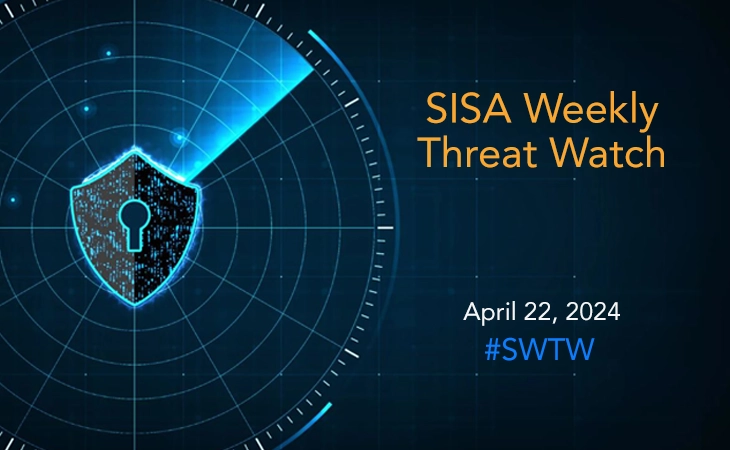

Data Classification: A necessity to secure your business
- January 9, 2022
What is Data Classification?
Data classification in its core is the process of identifying and categorizing data based on its sensitivity, level, type, and importance to an organization. This helps in determining the appropriate security measures and access controls to protect the data from unauthorized access, loss, or misuse.
According to ISO 27001, data classification is a process that aims to ensure an adequate level of protection for corporate data. This classification must be based on the criticality, value, and legal requirements that involve this data with an initial goal to mitigate data leakage or improper access due to the lack of identification of this information. In addition, the classification process makes it easier to locate and retrieve data, which is crucial when it comes to risk management, compliance, data security, or adapting to regulations such as GDPR and PCI DSS compliance.
Another advantage of data classification is that it eliminates unnecessary data, optimizes the maintenance of digital data archives, and reduces management costs. For years, data classification was purely a user-driven process. However, organizations today have options to automate the classification. For new data created by users, organizations can establish methods that allow users to classify the documents they create, send, or modify. If desired, they can also classify older data or choose to have it phased out as unclassified.
Thus, data classification is the cornerstone in the information management system that minimizes the risk of data leakage.
According to a recent CISO/CIO survey that looked at cyber security challenges in large financial services companies, 45 percent of respondents have seen cyber security attacks rise since the pandemic began. Thus, to secure sensitive data, it is an imperative for organizations to invest in robust data security solutions that begin with data classification.
Types of Data Classification
To protect your most valuable asset, data, you need to know what type of data it is and where it is located. As organizations possess several types of critical data, it becomes essential to classify them. Once the data is classified, you can apply the appropriate measures for its protection according to its category.
As a rule, a three to four-level distinction is made. A pragmatic approach, followed by most companies, provides the following classification:
- Public data – This data is accessible to everyone, even outside the company. For instance, the information that is present on the public website on the Internet. The address, the credo, or the advertising brochures fall into this category.
- Internal data – It is only accessible to the company’s employees. So, only a company’s own employees (and perhaps selected partner companies) can access them. These can be, for example, telephone directories, instructions, or general strategy documents.
- Confidential data – These kinds of data are only accessible to a limited number of employees. As a rule, this is information that is decisive for the vitality of a company. For example, payrolls and employee credentials are only accessible to the Human Resources department. The publication of these is sometimes even regulated by law, and a violation of the regulations could have legal consequences.
- Sensitive data – It consists of the data with highest level of security. These are selectively and exclusively accessible to certain defined individuals. Such information is directly responsible for the vitality of the company. For example, this is the customer information of a bank possessing accounts data. Only the responsible account manager knows who can be assigned to the numbered accounts. Leakage of this information can damage the business relationship directly and permanently.
Why do you need data classification for information security?
The answer is quite simple: if data is to be protected, one must first know and recognize which data is worth guarding. Data classification can address this issue by allowing IT and cybersecurity teams to continuously identify sensitive data and apply security controls based on their classification labels.
Few more reasons on why you need data classification:
- It helps to identify and protect sensitive data, which helps to reduce the risk of data breaches.
- Data classification can help organizations to comply with related industries regulations, that require organizations to protect certain types of data.
- Classifying data can help organizations to make better decisions about how to store, process, and share data.
- Data classification helps reducing the costs, in case of data breach, by proactively identifying and protecting sensitive data
With pressures mounting on CIOs and information security managers, it is important to recognize and prioritize the data that needs protection. This helps cybersecurity leaders allocate resources wisely and optimize security and compliance costs. Data classification plays a key role in providing a 360° view of data and its location within an organization that helps cybersecurity teams in protecting critical data.
Data Classification Process
At times, data classification can be a complex and hefty process. However, the automated systems and tools can streamline the process. The automated data classification tools identify what is sensitive to each company according to the content and context of the business and operate accordingly:
- Scanning and analysis: Thorough investigation of data sources to analyze and understand the true nature and context of business data.
- Learning: Sending files with sensitive data specific to the organization. From this, the system learns autonomously how to identify this type of information.
- Discovery: Location of sensitive and private data and who can access this data.
- Alert and action: The creation of customized breach alerts to prevent data leakage and increase protection according to privacy breaches.
How to guarantee data security based on data classification?
Data classification eventually allows organizations to scan data that is stored across the enterprise IT. In data classification, if the first step is to implement data protection, the second concerns the analysis of the locations where the data is stored – to understand if it is adequate or it needs to be changed. It means that for each type of data and each type of digital archive (file system, disk, email servers, cloud), it is necessary to perform three steps:
- Identify the security measures that need to be applied based on the level of data sensitivity.
- Carry out checks on how to authorize access, modify or delete data.
- Assess the risks and economic impact of business damage against a breach, ransomware attack, or other threats that can impact data.
Besides, to make the data classification process and its implementation more efficient, it is necessary to identify tools with some essential capabilities:
- Extensive search capabilities (phrases, compound terms, multiple words).
- Indexing of sensitive data.
- Data classification management.
- Management of the classification process.
- Broad coverage of data sources, which means considering data sources in the cloud, from local file systems to structured or unstructured data sources.
- Increases productivity and reduces the total effort by 70%.
- Retrieves information quickly and easily.
- Integration of Data Loss Prevention (DLP)
With data now playing a central role in almost every industry, the ability to track, classify and secure it is no longer a luxury. An effective data classification strategy should form the foundation of any modern security initiative, enabling organizations to quickly identify their most valuable data and keep it secure in times of digital transformation. And, to make this classification and other layers of security feasible, you must use specific technological tools.
For a deeper understanding of zero trust security, its principles, and best practices, read our latest whitepaper on Six best practices for effective implementation of Zero Trust Security.
Latest
Blogs
Whitepapers
Threat-a-Licious
Customer Success Stories

SISA is a global forensics-driven cybersecurity solutions company, trusted by leading organizations for securing their businesses with robust preventive, detective, and corrective cybersecurity solutions. Our problem-first, human-centric approach helps businesses strengthen their cybersecurity posture.
Industry recognition by CREST, CERT-In and PCI SSC serves as a testament to our skill, knowledge, and competence.
We apply the power of forensic intelligence and advanced technology to offer true security to 2,000+ customers in 40+ countries.
Company
Resources
Quick Links
Copyright © 2024 SISA. All Rights Reserved.
 USA
USA India
India APAC
APAC Middle East
Middle East Global
Global





 Facebook
Facebook Linkedin
Linkedin  Twitter
Twitter Youtube
Youtube







